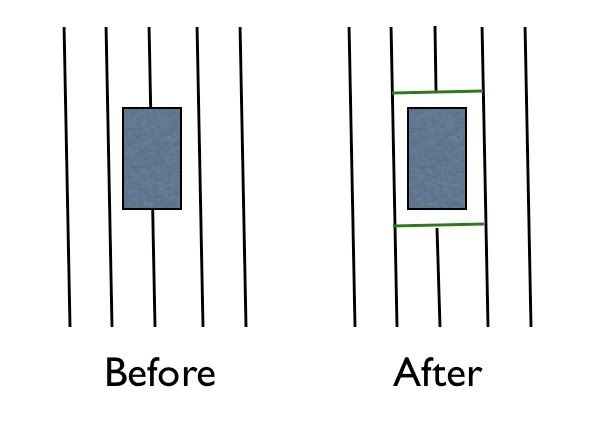J Levine
New Member
- Oct 5, 2006
- 753
- Boat Info
- 1995 Sea Ray 370 Sundancer
- Engines
- Mercruiser 7.4L Blue Water inboard V Drives
I figured I would try the CSR out for this one since I know there are a lot of DIY guys on this board. I bought my house, which was built in 1993, from the original owner who was one of these do it yourself guys from hell. Meaning everything he touched is screwed up. After almost 4 years I have corrected most of his "improvements" but last night I came across some of his handy work that is shocking. Check out the attached pictures. This guy decided to chop out about 30" of the bottom flange and 1/3 of the web out of two of the engineered floor joists in order to make room for a lighting fixture in the ceiling of the finished basement.
The obvious repair is to get two new joists and double them up against the two damaged ones. Unfortunatly doing this would be a major PITA since space is tight and there are a bunch of electrical lines running through the joists that would have to be relocated. These joists are spanning a 12' run between the foundation wall and a central steel beam.
Alternatively I am thinking about boxing in the bottom flange with cold rolled angle iron on both sides through bolted every 12" and then sandwiching the web with 10" x 1/4" steel plate also through bolted. The damaged section is about 30" wide so I was thinking about using 8' lengths of steel to span the section.
What do you think?
The obvious repair is to get two new joists and double them up against the two damaged ones. Unfortunatly doing this would be a major PITA since space is tight and there are a bunch of electrical lines running through the joists that would have to be relocated. These joists are spanning a 12' run between the foundation wall and a central steel beam.
Alternatively I am thinking about boxing in the bottom flange with cold rolled angle iron on both sides through bolted every 12" and then sandwiching the web with 10" x 1/4" steel plate also through bolted. The damaged section is about 30" wide so I was thinking about using 8' lengths of steel to span the section.
What do you think?







